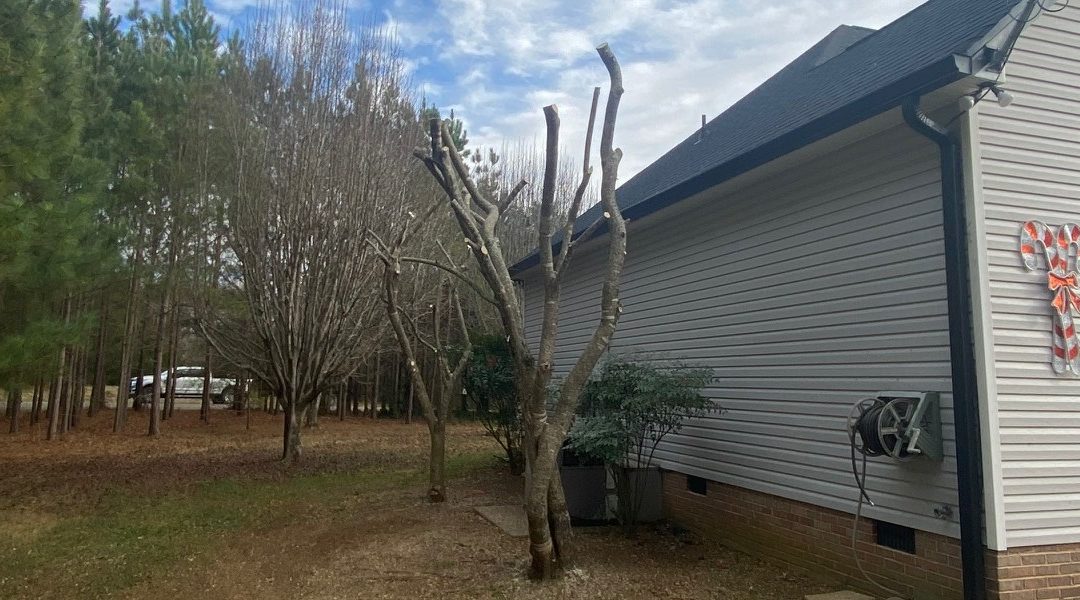At the Volunteer Tree Company, our arborists receive hundreds of calls from clients asking how to prevent weather-related and animal damage to trees. The reason for these types of queries is that many woodland or forest areas in the United States are urbanizing. As the leading tree experts in Columbia, Tennessee, Volunteer Tree Company can help.
Part of our service is to advise locals about these issues, including tips for creating a physical barrier to protect tree trunks and humane ways to prevent wild deer from rubbing their antlers on trees. Keep reading for easy ways to prevent animal damage to your trees so that these complex natural systems can give you clean air and keep soil erosion at bay.
Why Do Neighborhoods Need Protection for Trees?
According to National Geographic, more than 80% of wildlife thrives in forested areas worldwide. However, as land turns into commercially accessible clearings for human use, animals and human residents have to adjust. Without proper wildlife control, seasonal animal behavior can kill shrubs, bushes, and trees, which is worrying for any ecosystem.
Data from the USDA Forest Service reveals that Tennessee has over 14.4 million acres of forest land, which comprises more than 50% of its total landmass. Rabbits, vole, and deer are the three most prominent causes of young tree death in Tennessee, but they are also valuable players in the ecosystem. Preventing animal damage is essential to maintaining high curb appeal and real estate values, and doing it humanely is always the best choice.
Preventing Animal Damage to Trees: Elk and Deer
White-tailed deer abound in every area of Tennessee that borders a forest. These large mammals can weigh up to 140 pounds and live up to 12 years, which translates to an extensive amount of damage in one deer’s lifetime. They damage young trees and mature ones through seasonal behavior that arborists call ‘deer browsing’ or ‘buck rubbing.’
Male deer rub their growing antlers against trees to remove the velvet-like covering at the tips. This ‘buck rubbing’ action can kill smaller trees outright, snapping twigs and shedding bark if the trees are thinner than three inches in diameter. Countless young birch trees and redbuds die from buck rubbing, though mature oaks and cedars typically recover.
Antlers also damage thicker trunks by causing girdling, the removal of the outer bark covering. The outer layer transports sugars like sucrose from the roots to the branches and leaves, so everything above the girdled section will die. Deer can also snack on tree bark and growing buds; here are three solutions:
- Wrap the first six feet of your tree’s trunk with burlap and chicken wire
- Create a protective barrier taller than six feet, so the deer cannot jump over it
- Use deer repellant in dry weather conditions, and reapply these products every three months
Preventing Damage to Trees: Rabbits
Voles and rabbits gnaw tree bark in tunnels under the soil. Rabbits are infamous for girdling hectares of forest areas in Australia, and we often spot this behavior in Tennessee, too. It is seasonal and more common during winter.
Proactiveness is essential, as you won’t notice the damage until your trees are dying. Protect trees by doing the following:
- Apply animal repellant onto the branches and trunks of your trees before winter
- Create a hardware screening at least 18 inches taller than the total expected snowfall
- Wrap your tree in plastic or use a fabric tree wrap
Call the Tree Professionals
Another alternative is to call our tree protection and land clearing services in Tennessee. Our licensed arborists also help residents looking for ways to stop tree bark from becoming a tasty food supply for fungus, pests, and parasites in their neighborhoods.
Why not chat with Volunteer Tree Company at (931) 637-5487 today about ways to prevent animal damage to trees in your area?


